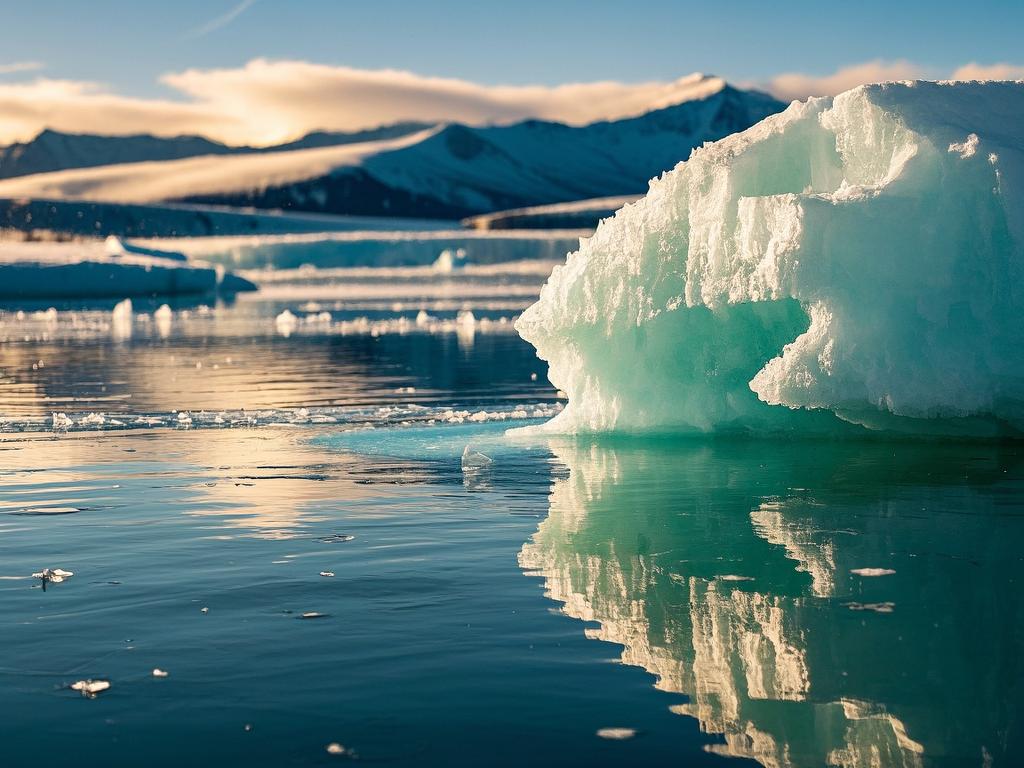
# The Enormous Ice Sheets of Greenland: Melting Away with Consequences
Hey there, fellow earth enthusiasts! 🌍 Today, we're diving headfirst into the chilling reality of the massive ice sheets in Greenland that are rapidly melting. Brace yourselves for a wild ride through the science, the history, and the mind-blowing consequences of this environmental catastrophe.
Let's start with the basics. Greenland, the world's largest island, is a frozen behemoth covered in ice that's been around for thousands of years. These ice sheets are like the planet's ancient guardians, holding vast amounts of fresh water that could potentially reshape sea levels worldwide if they were to melt completely. And here's the kicker: they're melting at an alarming rate.
Scientists have been keeping a close eye on Greenland's ice sheets for decades, and the numbers are truly staggering. In recent years, the rate of ice loss has skyrocketed, with some estimates suggesting that Greenland is losing enough ice each year to fill millions of Olympic-sized swimming pools. That's a mind-boggling amount of water, and it's having a profound impact on our planet.
But what's causing this rapid melt? Well, there are a few factors at play. One of the main culprits is climate change. As global temperatures rise, the ice sheets are being hit from all sides. Warmer air temperatures are causing the ice to melt from the top, while warmer ocean waters are eroding the ice from below. It's a one-two punch that's slowly but surely chipping away at these massive ice formations.
Another factor is the feedback loop. As the ice melts, it exposes more dark land and ocean surfaces, which absorb more sunlight and heat. This, in turn, further warms the planet and accelerates the melting process. It's a vicious cycle that's difficult to break, and it's happening right before our eyes.
So, what are the consequences of all this melting? The most obvious one is rising sea levels. As the ice sheets melt, the water they release flows into the oceans, causing sea levels to rise. This poses a significant threat to coastal communities around the world, many of which are already vulnerable to flooding and storm surges. Low-lying islands and coastal cities could be completely submerged in the coming decades, displacing millions of people and causing untold damage to infrastructure and economies.
But the impacts don't stop there. Melting ice also affects ocean currents, which play a crucial role in regulating the Earth's climate. Changes in ocean currents could disrupt weather patterns, leading to more extreme weather events such as hurricanes, droughts, and heatwaves. It could also have a profound impact on marine ecosystems, as warmer waters and changing salinity levels could harm fish, coral reefs, and other marine life.
And let's not forget about the loss of biodiversity. Greenland's ice sheets are home to a unique and fragile ecosystem that has adapted to life in extreme cold. As the ice melts, this ecosystem is being destroyed, threatening the survival of countless species of plants and animals. From polar bears and walruses to arctic foxes and seabirds, these iconic creatures are facing an uncertain future as their habitats disappear.
So, what can we do to stop this madness? Well, the first step is to acknowledge the problem and take action. We need to reduce our greenhouse gas emissions by transitioning to renewable energy sources, such as solar, wind, and hydro power. We also need to make changes in our daily lives, such as reducing our energy consumption, using public transportation, and recycling. Every little bit helps, and if we all do our part, we can make a difference.
But it's not just up to individuals. Governments and businesses also have a responsibility to take action. They need to implement policies and regulations that promote sustainable development and reduce carbon emissions. They also need to invest in research and development to find new solutions to the climate crisis, such as carbon capture technologies and sustainable agriculture.
Finally, we need to raise awareness about the importance of protecting our planet. We need to educate others about the impacts of climate change and the urgent need for action. By working together, we can create a global movement to save our planet and ensure a sustainable future for generations to come.
In conclusion, the melting of Greenland's ice sheets is a global crisis that requires immediate action. The consequences of this environmental catastrophe are far-reaching and will affect every aspect of our lives. But by taking steps to reduce our greenhouse gas emissions, make changes in our daily lives, and raise awareness about the importance of protecting our planet, we can still make a difference. So, let's all do our part and be the change we wish to see in the world. 🌱💪
#Greenland #IceMelting #ClimateChange #EnvironmentalCrisis #SaveOurPlanet

